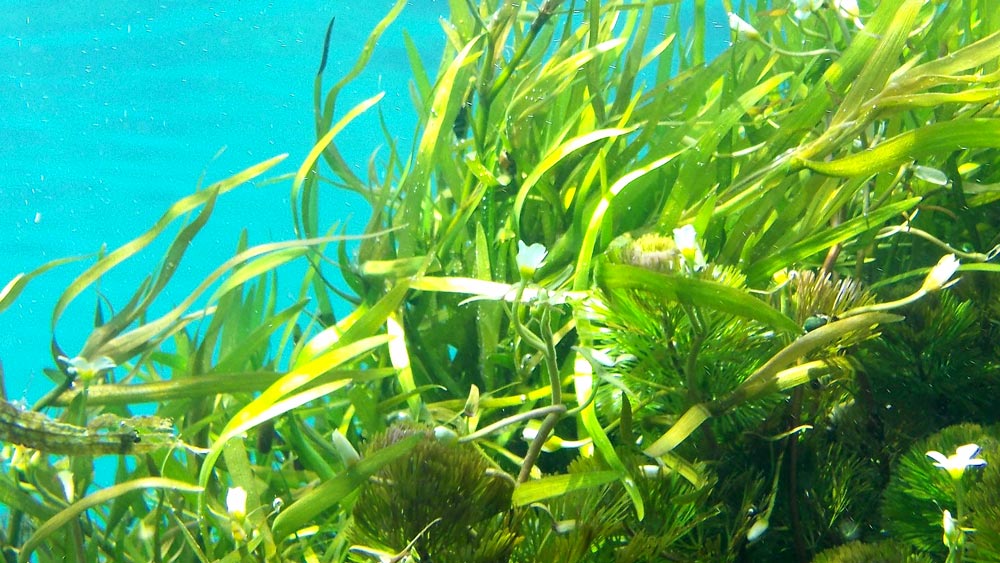Freshwater Refugium
Keeping a freshwater aquarium can be a rewarding and peaceful hobby, but it requires regular maintenance to keep the environment healthy and thriving. One valuable tool for maintaining a healthy aquarium is a freshwater refugium.
Pain Points Related to Freshwater Refugium
As with any aquarium equipment, setting up and maintaining a freshwater refugium can be daunting for beginners. It can also be a challenge to find the right balance between the refugium's inhabitants and the main aquarium's occupants, as they should not compete for resources. Additionally, there may be disagreements within the aquarium community regarding the efficacy of using a refugium.
What is a Freshwater Refugium?
A freshwater refugium is an additional compartment attached to an aquarium that houses organisms that can benefit the main aquarium's ecosystem. It usually contains live plants, algae, and microorganisms that can provide several benefits to the aquarium's inhabitants. It acts as a natural filtration system and helps reduce nitrate and phosphate levels in the water, making it less toxic for aquatic life. The live plants and algae also absorb carbon dioxide and produce oxygen, improving the overall water quality.
Summary of Main Points
In summary, a freshwater refugium can benefit your aquarium in multiple ways. It can help maintain a healthy ecosystem by reducing nitrate and phosphate levels, improving water quality, and providing a natural filtration system. While setting up and maintaining a refugium can be challenging, the benefits are significant.
Benefits of a Freshwater Refugium
Before I started using a freshwater refugium, my aquarium struggled with high levels of nitrate. Despite regular water changes and chemical treatments, I couldn't seem to get the levels under control. However, after incorporating a refugium, I saw a noticeable improvement in my water quality. The plants and algae in the refugium were able to absorb excess nutrients, which helped reduce the nitrate levels. I also noticed that my fish were more active and seemed generally healthier.
In addition to improving water quality and reducing nitrate levels, a freshwater refugium also promotes biodiversity within the aquarium. Since the refugium can house a variety of microorganisms, it can provide a food source for other aquarium inhabitants, such as shrimp and snails. The live plants and algae in the refugium can also provide shelter and spawning areas for fish and other aquatic creatures.
Setting up a Freshwater Refugium
Setting up a freshwater refugium requires some planning and patience. First, you will need to choose a suitable location for the refugium and decide on the type of plants and organisms to include in it. Some popular choices for freshwater refugium plants include java moss, duckweed, and water sprite, while common organisms include copepods and snails. Make sure to research the specific needs of the organisms you plan to include and ensure they are compatible with the main aquarium's inhabitants.
Once you have chosen the organisms, you can set up the refugium by attaching it to the main aquarium. It should be connected to the main tank's filtration system, and the water levels should match. After adding the plants and organisms, you will need to monitor the water quality regularly and make adjustments as necessary.
Common Questions About Freshwater Refugium
1. Do I Need a Refugium for My Freshwater Aquarium?
No, a freshwater refugium is not a necessity for maintaining a healthy aquarium. However, it can provide several benefits, such as improving water quality and promoting biodiversity within the aquarium.
2. What Type of Plants Should I Include in My Freshwater Refugium?
Some popular choices for freshwater refugium plants include java moss, duckweed, and water sprite. However, make sure to research the specific needs of the plants you plan to include and ensure they are compatible with the main aquarium's inhabitants.
3. Can I Use a Freshwater Refugium with a Saltwater Aquarium?
No, a freshwater refugium is not suitable for a saltwater aquarium. A saltwater refugium should be used instead.
4. How Often Should I Clean My Freshwater Refugium?
The frequency of cleaning your freshwater refugium will depend on its size, the number of organisms it houses, and the water quality. It is recommended to check the water quality regularly and clean the refugium as necessary to maintain optimal water quality.
Conclusion of Freshwater Refugium
In conclusion, a freshwater refugium can provide several benefits for maintaining a healthy aquarium. While it may be challenging to set up and maintain, the rewards are significant. By reducing nitrate and phosphate levels, improving water quality, and promoting biodiversity within the aquarium, a freshwater refugium can help create a thriving ecosystem for aquatic life.
Gallery
All About REFUGIUM
Photo Credit by: bing.com / refugium sump tank types
Refugium (fishkeeping) - Alchetron, The Free Social Encyclopedia

Photo Credit by: bing.com / refugium aquarium saltwater sump tank fishkeeping algae planted algaebarn refugiums alchetron operating reefer such
Best Macroalgae For Refugium - Aquarium Gear

Photo Credit by: bing.com / refugium macroalgae aquarium
Freshwater Refugium - Tropical Fish Keeping - Aquarium Fish Care And
Photo Credit by: bing.com / refugium freshwater aquarium
Instructions For A DIY Saltwater Aquarium Refugium
:max_bytes(150000):strip_icc()/building-a-saltwater-aquarium-refugium-2925681_color-7bd645b2756c4feb92dac606a9478620.gif)
Photo Credit by: bing.com / refugium aquarium saltwater building diy instructions spruce bang julie illustration